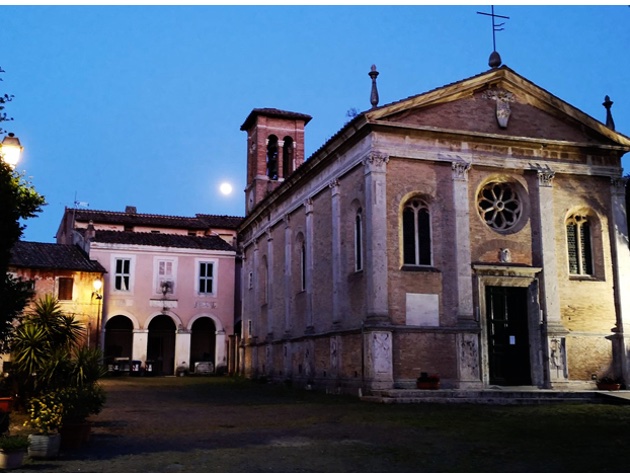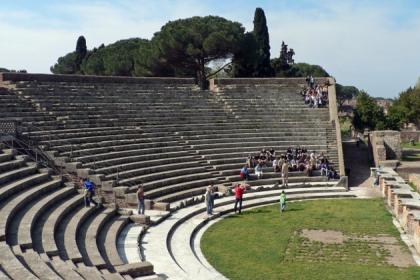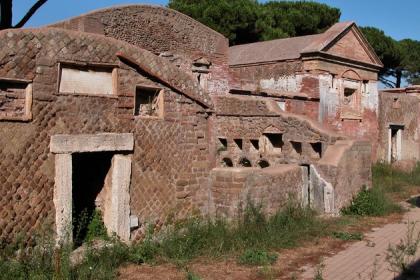
The church is located in Ostia Antica, in the square of the ancient medieval village, and was built at the end of the fifteenth century by the will of the French Cardinal Guglielmo d’Estouteville, and was later completed by Cardinal Giuliano della Rovere, the future Pope Julius II. The hypothesis of the existence of a pre-existing early Christian church on the site of the current one remains uncertain.
The work was entrusted to the great architect Baccio Pontelli, who also built the adjacent fortress. The church looks like a simple construction, with well-distributed and well-ordered volumes. The red of the bricks deliberately contrasts with the whiteness of the travertine used for the pilasters, decorated at the base with weapons and objects related to war and the heroic world: the stylistic reference of the cathedral to classical antiquity and its expressions is evident.
The interior of the basilica has a single nave, with a trussed ceiling, and illuminated by a rose window and mullioned windows of the fifteenth century adorning the façade. On the right is the Chapel of Santa Monica, where there is a sepulchral plaque, discovered near the church in 1945, which recalls the ancient cult for the body of the saint which was kept here. In the same chapel there is an Ecstasy of Saint Monica by Pietro da Cortona. In front of the apse there is a triumphal arch made up of bare marble and decorated with 16th-century frescoes. The modern altar is embellished with two fifteenth-century bas-reliefs; the three altarpieces are from the seventeenth century: one of these, the work of Andrea Sacchi, is inserted in an oval depicting the Martyrdom of Santa Aurea.
Photo credits: courtesy of Church of Sant’Aurea (Ostia) Facebook Page
Parco Archeologico di Ostia Antica

 Condividi
Condividi
The Borgo of Ostia Antica and the Castle of Julius II
 Condividi
Condividi
Necropolis of Porto on the Isola Sacra

 Condividi
Condividi
Information
For the timetable of the masses and visiting conditions, please consult the contacts.
 Condividi
Condividi
Location
To find out about all accessibility services, visit the Rome accessible section.











































